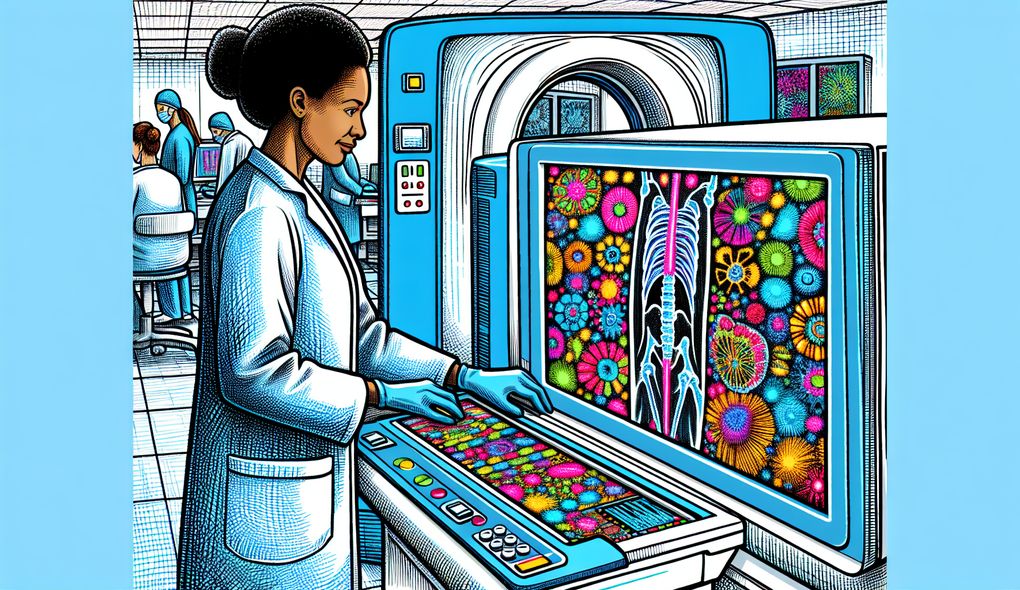What techniques do you use to analyze and evaluate fluoroscopic images for technical quality?
SENIOR LEVEL

Sample answer to the question:
To analyze and evaluate fluoroscopic images for technical quality, I employ a combination of visual assessment, technical knowledge, and industry guidelines. I carefully review the images for clarity, proper positioning, and adequate exposure. I also pay attention to details such as image artifacts or distortions that may affect the accuracy of the diagnosis. Additionally, I utilize specialized software tools to measure anatomical structures and compare them to reference values. By following established protocols and standards, I ensure that the images meet the required quality standards.
Here is a more solid answer:
To analyze and evaluate fluoroscopic images for technical quality, I utilize my expertise in operating a wide range of fluoroscopic equipment. I follow a systematic approach, carefully assessing the images for clarity, proper alignment, and appropriate exposure levels. In cases where there are image artifacts or distortions, I troubleshoot the equipment and make necessary adjustments to ensure optimal image quality. I also leverage my strong analytical and problem-solving skills to identify any abnormalities or inconsistencies that may impact the accuracy of the diagnosis. Communication is crucial in this role, and I collaborate closely with radiologists to refine imaging protocols and ensure the highest standards of care. Additionally, I maintain meticulous records and adhere to strict confidentiality protocols to protect patient information.
Why is this a more solid answer?
The solid answer expands on the techniques mentioned in the basic answer by emphasizing the candidate's expertise in operating fluoroscopic equipment and their systematic approach to image evaluation. It also highlights their strong analytical and problem-solving skills in identifying abnormalities or inconsistencies. The answer demonstrates the candidate's ability to work collaboratively and their commitment to maintaining high standards of care. However, it could be further improved by providing specific examples of past experiences or achievements related to analyzing and evaluating fluoroscopic images.
An example of a exceptional answer:
To analyze and evaluate fluoroscopic images for technical quality, I employ a comprehensive approach that encompasses various techniques. Firstly, I conduct a visual assessment of the images, meticulously examining factors such as image clarity, resolution, contrast, and anatomical detail. I also utilize advanced software tools and measurements to quantify and compare anatomical structures, ensuring they align with reference values. Additionally, I have developed a deep understanding of the technical factors that influence image quality, such as exposure settings, collimation, and radiation dose. This allows me to make informed judgments and adjustments to optimize image quality while minimizing patient radiation exposure. Furthermore, my strong analytical and problem-solving skills enable me to identify and troubleshoot any equipment or technical issues that may affect image quality. I collaborate closely with radiologists to refine imaging protocols and ensure the highest level of diagnostic accuracy. Lastly, I actively contribute to continuous improvement initiatives, staying updated with the latest advancements in fluoroscopic imaging techniques and participating in skills enhancement programs.
Why is this an exceptional answer?
The exceptional answer showcases the candidate's comprehensive approach and expertise in analyzing and evaluating fluoroscopic images. It covers a wide range of techniques, including visual assessment, software tools utilization, and technical factors consideration. The answer also highlights the candidate's strong analytical and problem-solving skills, as well as their dedication to continuous improvement and staying updated with the latest advancements. Overall, the answer demonstrates a high level of proficiency and aligns well with the job requirements.
How to prepare for this question:
- Familiarize yourself with the different types of fluoroscopic equipment and their features. Stay updated with the latest advancements in the field.
- Develop a systematic approach to image evaluation, considering factors such as clarity, alignment, exposure, and artifacts.
- Practice using software tools for measurements and comparisons of anatomical structures.
- Enhance your knowledge of anatomy, physiology, pathology, and medical terminology to better understand and interpret fluoroscopic images.
- Improve your analytical and problem-solving skills by engaging in case studies or simulations.
- Highlight instances in your past experience where you have successfully identified and resolved technical issues related to image quality.
- Demonstrate your ability to work collaboratively and communicate effectively by sharing examples of collaborating with radiologists or other healthcare professionals.
What are interviewers evaluating with this question?
- Expertise in operating fluoroscopic equipment
- Strong analytical and problem-solving skills
- Excellent communication and interpersonal skills
- Ability to work collaboratively in a fast-paced, multidisciplinary environment
- Keen attention to detail and dedication to providing high standards of care

